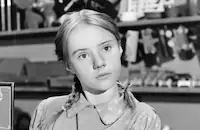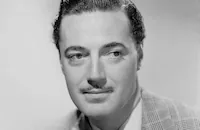The Pied Piper
Brief Synopsis
Cast & Crew
Irving Pichel
Monty Woolley
Roddy Mcdowall
Anne Baxter
Otto Preminger
J. Carrol Naish
Film Details
Technical Specs

Synopsis
Mr. Howard, an Englishman vacationing in the South of France in 1940, is horrified when he learns of the evacuation of Dunkirk and the possibliity of Hitler invading England. Deciding that his place is at home, Howard makes plans to leave immediately for Paris and from there go to London. Despite Howard's dislike of children, fellow Englishman Cavanaugh, a League of Nations official, and his wife persuade him to escort their children, Ronnie and Sheila, back to England while they return to Switzerland. On the way to Paris, Howard and his charges stop in Joigny, where their train is commandered by the French military. When they board a bus to Chartres, Howard realizes that he has acquired a new ward, Rose, a French girl whose father works in London. Although Howard is angry at Ronnie, for whom he has a particular dislike, for inviting Rose to join them, he allows her to remain. Once again the travelers are disrupted, first when their bus breaks down and then when it is attacked by German aircraft. Howard soon realizes that he has a fourth child in tow: Pierre, a shell-shocked French lad whose parents were killed in the aerial assault. The final addition to the group is Willem, a Dutch boy, and Howard is mystified by the children's ability to understand each other despite their different languages. Howard takes his charges to the home of the Rougerons, whom he had met on a previous vacation. The Rougeron's daughter Nicole agrees to accompany Howard and the children to the seaside, in the hope of convincing her uncle Aristide to ferry them across the Channel. On the train ride there, Howard learns that Nicole and his son John, an R.A.F. pilot who was shot down two months earlier, were in love, and they comfort each other with their memories of him. After they reach a small village near Brest, Aristide arranges for a fisherman named Focquet to transport them across the Channel. As they are boarding the boat, however, the group is captured by German soldiers. They are taken to Major Diessen, a Gestapo officer, who refuses to believe Howard's story, suspecting instead that he is the spy who arranged for the English bombardment of Brest during a visit by Hitler. When Howard offers to confess to whatever charges Diessen wants as long as Nicole, Focquet and the children are released, the major is intrigued. Diessen learns from Howard that he intended to send the youngsters to his daughter in America for safekeeping and that he does not care that Pierre is Jewish. When Howard asserts that he would do the same for a German child, Diessen agrees to allow the group to go free if Howard will send his young niece Anna, who is half-Jewish, to his brother in New York. Howard agrees, and after bidding farewell to Nicole, takes the children to England. Soon after, Howard is in his London club, where he assures his friends that he did not have too much difficulty returning from France.

Director

Irving Pichel
Cast

Monty Woolley

Roddy Mcdowall

Anne Baxter

Otto Preminger

J. Carrol Naish
Lester Matthews
Jill Esmond
Ferike Boros

Peggy Ann Garner
Merrill Rodin
Maurice Tauzin
Fleurette Zama
William Edmunds

Marcel Dalio
Marcelle Corday
Odette Myrtil
Jean Del Val
Davis Roberts
Henry Rowland

Helmut Dantine
George Davis

Edward Ashley
Otto Reichow
Henry Guttman
Hans Von Morhart

Hans Von Twardowski
William Yetter
Adrienne D'ambricourt
Mici Goty
Jean De Briac
Ernst Hausman
Julika Alper
Wilson Benge

Brandon Hurst
Thomas Louden
Isabelle Lamore
Simone Sergis
Pete, An Owl
Crew
Leo Arnaud
Harry Brand
Otto Brower
Edward Cronjager
Richard Day
Tom Dudley
Roger Heman
Hal Horne
Nunnally Johnson
Nunnally Johnson
Nunnally Johnson
George La Brousse
Thomas Little
Allen Mcneil
Alfred Newman
Richard Ordynski
Guy Pearce
Maurice Ransford
Dolly Tree
Curly Twiford
E. Clayton Ward
Darryl F. Zanuck

Film Details
Technical Specs

Award Nominations
Best Actor
Best Cinematography
Best Picture
Quotes
Trivia
Notes
Nunnally Johnson's onscreen credit reads "Produced and Written for the screen by Nunnally Johnson." An abridged version of Nevil Shute's novel appeared in Collier's from November 8, 1941 to January 3, 1942, and in the April 1942 issue of Reader's Digest. According to Hollywood Reporter news items, Irving Pichel replaced Archie Mayo after Mayo was switched by Twentieth Century-Fox to Tampico (see below), and studio publicity noted that Peggy Ann Garner replaced Clare Sandars in the role of "Sheila Cavanaugh" after Sandars was stricken with measles. Studio publicity also notes that some scenes were shot on location in Agoura, CA. Although Morton Lowry is listed in the Variety review as playing "Roger Dickinson," he is not in the finished film. A March 30, 1942 studio press release reported that Lowry was to play the "romantic part opposite" Anne Baxter. According to a modern source, the picture marked the screen debut of actor Jim Backus, but he could not be identified in the viewed print. Rochester, NY was chosen as the site of the film's world premiere because throughout the picture, "Howard" and "Ronnie Cavanaugh" argue about whether Rochester is a state or city.
The film received Academy Award nominations for Best Picture and Best Cinematography (black and white), and Monty Woolley received a nomination for Best Actor. The picture was also named one of Film Daily's Ten Best Pictures of 1942. Although some modern sources claim that the picture is based on the fable "The Pied Piper of Hamelin," the fable merely provided inspiration for Nevil Shute's novel. Roddy McDowall and Anne Baxter reprised their roles in a Lux Radio Theatre broadcast on December 21, 1942, co-starring Frank Morgan. A second Lux version was broadcast on November 6, 1944, starring Frank Morgan and Signe Hasso. Shute's novel was filmed for television under the title Crossing to Freedom; this British-American co-production starred Peter O'Toole and Mare Winningham and aired in the United States on April 8, 1990.












